
Deaf World Adventures (DWA) views a safari adventure as a kind of expedition that involves exploring great wildlife. Activities include cruising in a Land Rover and going over and under some terrain, watching for a game of wildlife animals, and living outdoors in canvas tents.
Ask anyone who has been on a safari in Africa and they will tell you about the stunning images of the landscapes, sunsets, and the animals, especially the formidable “Big 5” that includes the elephant, rhinoceros, leopard, lion, and Cape buffalo. Safaris are not limited to driving in a Land Rover. There are safaris by boat, horseback riding, walking, and hot air ballooning, too.
Of many safari stories told, you will find that no safari in Africa is the same, each location, season, and year is special to those who have experienced Africa’s wildlife. This is true for Kenya with its storytelling landscapes, that stretch from the Great Rift Valley through semi-arid deserts, savannah grasslands, and mountainous highlands. You’ll find great rivers, lake basins, and beaches by the sea, too.
Adding to the biodiversity, Kenya has tremendous natural habitats for wildlife animals, birds, fishes, insects, and more. The rare African animals like the reticulated giraffe, gerenuk, and Grevy’s zebra are said to be only found in Kenya’s Samburu National Wildlife Reserve. And, Kenya has a huge population of cats (lion, cheetah, leopard, and other smaller cats) in its wildlife reserves.
Another spectacular is the great migration that is one of the 8 wonders of the world, is at the Maasai Mara in Kenya. You have a pretty good chance to witness a wild cat chase. Many videographers and photographers choose Kenya for their pictures.
Many novels, documentaries, and movies about African wildlife centered in Kenya have inspired many people to plan their Safari in Kenya.

Why Deaf World Adventures picks Kenya for their Safari Adventures?
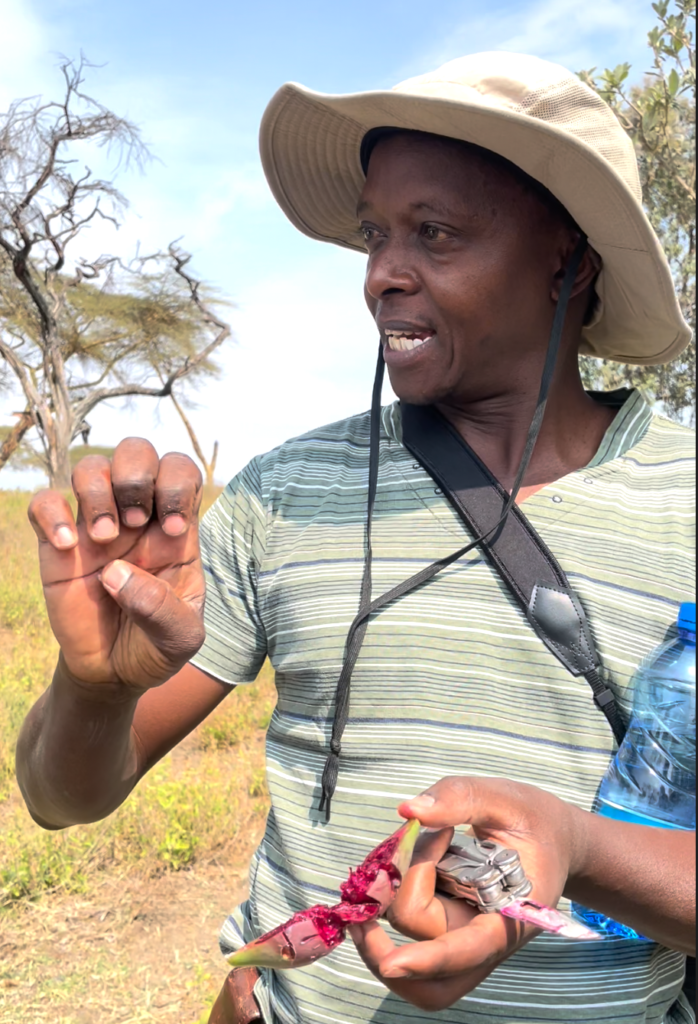
The beautiful and diverse natural habitat, vast wildlife animals, and observable ecology system are the reasons why Deaf World Adventures chooses Kenya for their safari adventures. And there is Peter Kariuki Philip, a favorite guide, who is a native of Kenya who knows sign language.
Here is some history about how Deaf World Adventures safari started. First, in January of 2013. Peggy Prosser who is the director of D-travel Agency with Deaf World Adventures flew to Nairobi, the capital of Kenya to meet up with different safari suppliers. Peggy stayed in the country for the full month. She met up with safari experts, park rangers, and drivers. Peggy was offered to experience a safari adventure in some of Kenya’s parks. Peggy was impressed with her Safari experience but wished for a guide who knew sign language.
Luckily, Peggy’s Deaf friends in Nairobi knew exactly the kind of guide she was looking for. They introduced her to Peter who was an experienced safari guide and knew sign language, particularly Kenya Sign Language. The two met and talked about wildlife reserves and parks in Kenya, the Kenya Deaf community, and sign language. After several meetings about safaris with Peter through sign language, Peggy said she felt that Peter was the best guide for Deaf World Adventures’ Safaris.
Peggy, Peter, and Eliza who manage the Safari itineraries agreed to plan a safari tour for Deaf groups annually during the Wildebeest Migration season.
The first safari was held in 2014 and the latest one was last summer, 2021. Deaf World Adventures continues to offer a safari for Deaf groups with Peter and during the Wildebeest migration season.
Peter Kariuki Philip continues to supply DWA with safari adventures. His office is in Nairobi, Kenya, though he’s often out driving and guiding people in some wildlife park. Peter isn’t just an amazing safari guide, he’s an expert in wildlife and animal behavior. Peter studied animal behavior in college and has worked in the field for 25-plus years.
During the safaris with Peter, he usually will sign Kenya Sign Language to Deaf groups, though over the years, he has picked up some American Sign Language, International Signs, and Japanese Sign Language, too. As a hearing native of Kenya, Peter speaks Shwali, English, and other local dialects. Peter is also fluent in Hebrew and has worked as a guide in Israel and Egypt. Peter has told Peggy that he enjoys learning sign language the most. He says he wants to mingle with different Deaf people from around the world.
What does Deaf World Adventures Safari Include?
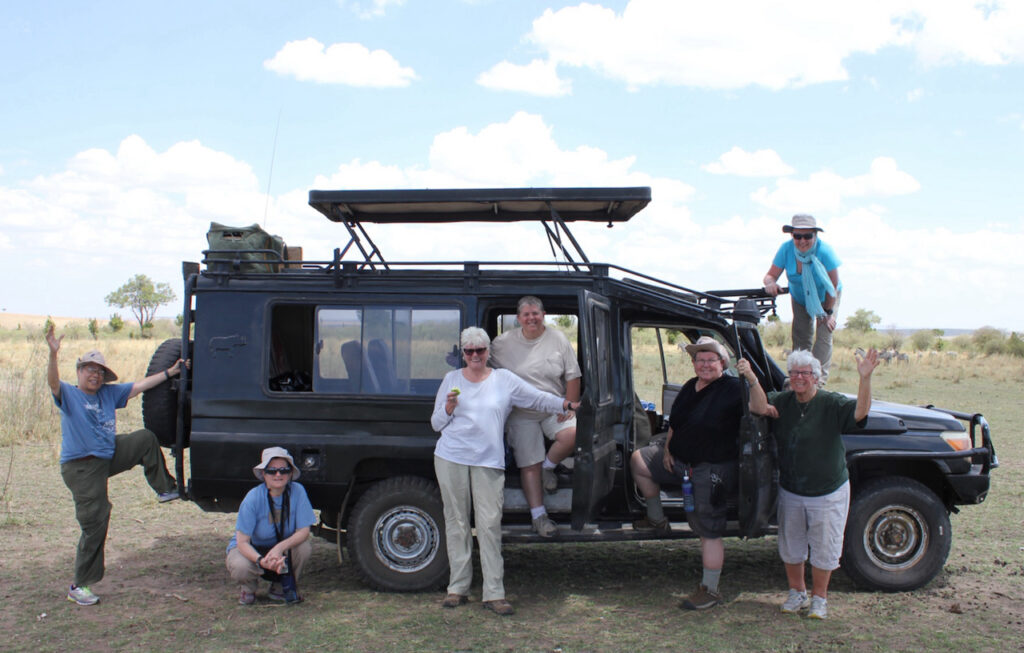
Deaf World Adventures’ Safari Adventure is a 10-day / 9-night exploration type of tour. Participants meet up in Nairobi the day before the safari begins. Travel is overland in a six-seat landrover with a rooftop that pops up for game viewing in the reserves and parks. Overnights are at campsites with heavy-duty canvas tents or in lodges with rooms. All rooms are double occupancy. There are rooms for single travelers and triple rooms too. . All campsites have flushing toilets and hot water showers inside the tent or room at the lodge. A full meal plan with breakfast, lunch, and dinner is included in the safari package. The meals are usually buffet-style or a menu with a choice of the main dish of meat, chicken, or fish. Vegetarian meals are an option. On days with a long safari drive inside the parks, you will have a picnic in an open space inside the park.
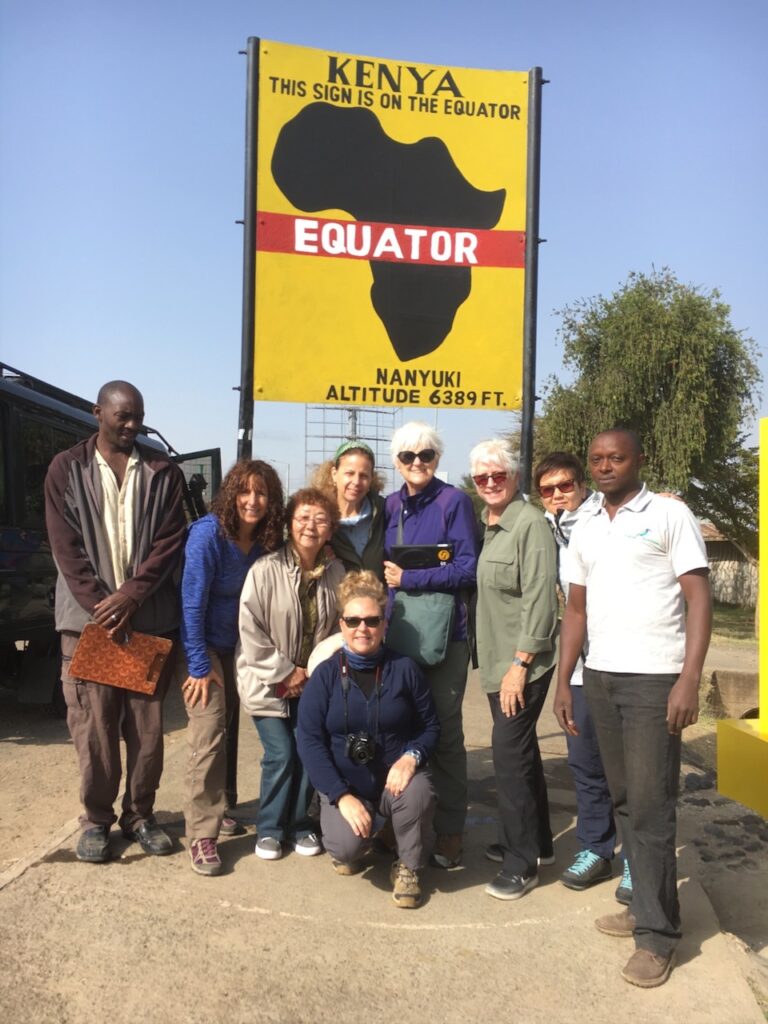
Travel is overland to different wildlife reserves. The drives are as long as 3 to 5 hours. Peter will stop for a break at interesting places. Travelers may browse through artisan shops with handicrafts made by locals, or relax at a cafe sipping on Kenya coffee or tea. You may sit for a geography lesson about the equator at some rest stop. And there is a stop at Nyahururu Falls where the Kikuyu people, dressed in their traditional clothing will greet you. Some carry a spear and shield that makes them look daring. They will invite you to listen to a story about how Kenya became independent from Britain in 1963. Usually, Peter will do his best to interpret in sign language.
In addition to the daily game drives, there are other activities on the itinerary such as enjoying a picnic in the open and going on a boat safari. There are plenty of guided bush walks at the campsite. Some camps are inside conservancies/. Some have sanctuaries, and a visit to a Maasai village.
The campsites offer activities, too. Many sites have a waterhole or some lake or riverfront, where you can sit and watch the animals come for the water. Other camps have swimming pools and some with a jacuzzi. All camps have a lounge adjourned to a game room with darts and billiards or a lounge with a bar and library. Often there will be some performance at the lounge, usually music or some Maasai chants. One camp has a culture center with a showcase of information about the animals and the Masai people on the walls. Some camps have feeding times for some animals who live or reside at the camp. TV is rare and WIFI is not always accessible.
Some camps offer bookings for other fun activities inside parks, like hot air ballooning, horseback riding, cycling, beading lessons and/or a massage, and more. These activities are an additional fee.
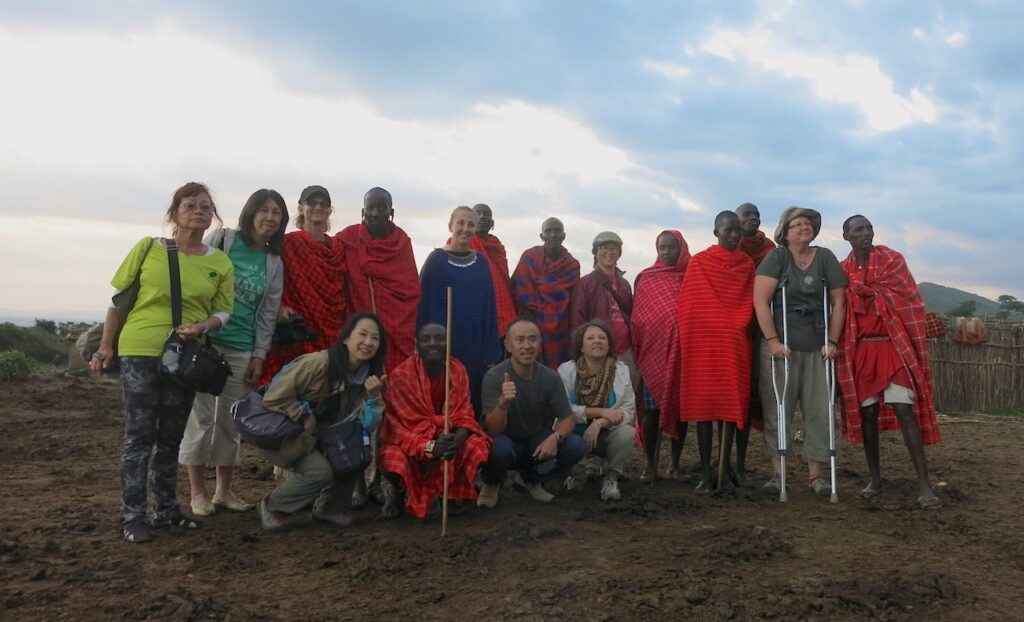
Description of the National Wildlife Reserves and Camps
Below are short descriptions of the national reserves or parks Deaf World Adventures with Peter visit and some activities on the itinerary. Deaf World Adventures is proud to introduce you to the campsites where we stay for a night or two. Some photos have been added for your review. You may find some friends who joined Deaf World Adventures’ safari, too.
Sambaru National Reserve
The Samburu National Reserve is in the northern part of Kenya near the equator. It is a wildlife reserve on the banks of the Ewaso Ng’iro river in Kenya which includes the Buffalo Springs and the Shaba National Reserves. Together they make the Samburu National Reserve. The place is very peaceful and attracts animals to the Ewaso Ng’iro River which flows through palm groves and thick riverine forests found on both sides of the reserves. Driving away from the river, the natural environment becomes dry and sandy with acacias and other small shrubs, some with thorns. It can get very hot in the afternoon. The animals seek shade and many safaris return to the campsites in the afternoon. The river is the only water that the animals in this arid-dry region could not survive without.
There are many animals in the reserve with some that are a very rare find. The rare animals include the Grevy’s zebra, Somali ostrich, reticulated giraffe, gerenuk, and the beisa oryx. They can be found in the Samburu Reserve. Peter will help you identify them. Deaf World Adventures believes that you will find Samburu wildlife fascinating.
Do you know about the story of Kamunyak, the famous Lioness who adopted a baby Oryx? This lioness and the oryx were residents of the reserve. Past safaris spotted the two in the park. Today, we have no idea of their whereabouts.
Deaf World Adventures spends two nights at the Samburu Game Lodge, a campsite inside the Samburu National Reserve. The camp looks out to the Ewaso River. The river is a great place to watch for wildlife that comes to the river for water. The camp has some wildlife animals residences such as monkeys, birds, lizards, and crocodiles, but there’s a fence to keep the animals from entering the campgrounds. The camp has a nice bar that overhangs above the river. The lodge has cottages and bandas rooms for accommodation with some that are truly luxurious for honeymooners.
Deaf World Adventures has a story about a situation at Samburu Game Lodge campsite in 2017. The situation was that a baby elephant entered the campsite and the mother elephant could enter the camp looking for the baby. Staff at the camp were running around frantically asking for the help of Safari drivers.
Watching the camp staff and safari guides, even the cooks make a loud noise. And the safari drivers were in their Land Rovers, honking and driving the baby out through the gate. It was a good thing that the mother never entered. Yet she had been waiting at the gate. It was amazing to witness such teamwork with these people.
The campsite also has a nice swimming pool with a jacuzzi for an afternoon break. There’s also a wet bar for cocktails Or you can hang out at the bar that hangs over the river and play cards, or relax with a book at your private veranda.
Photo Gallery of Adventures at Samburu
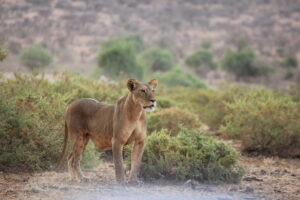
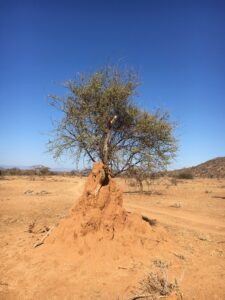
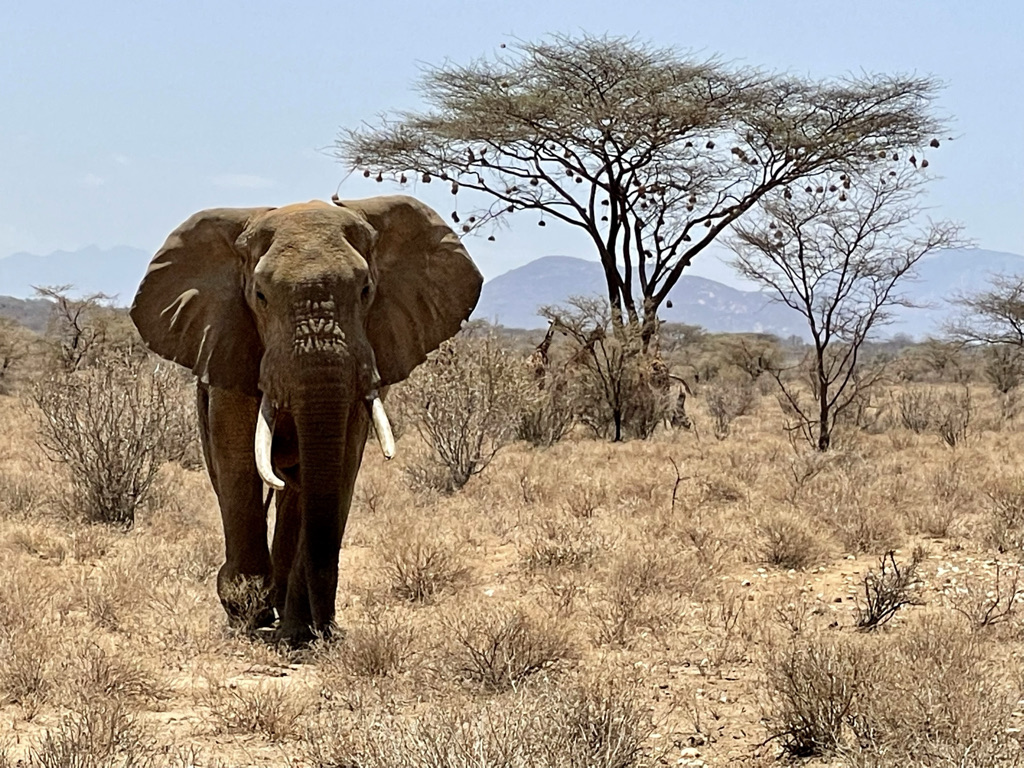

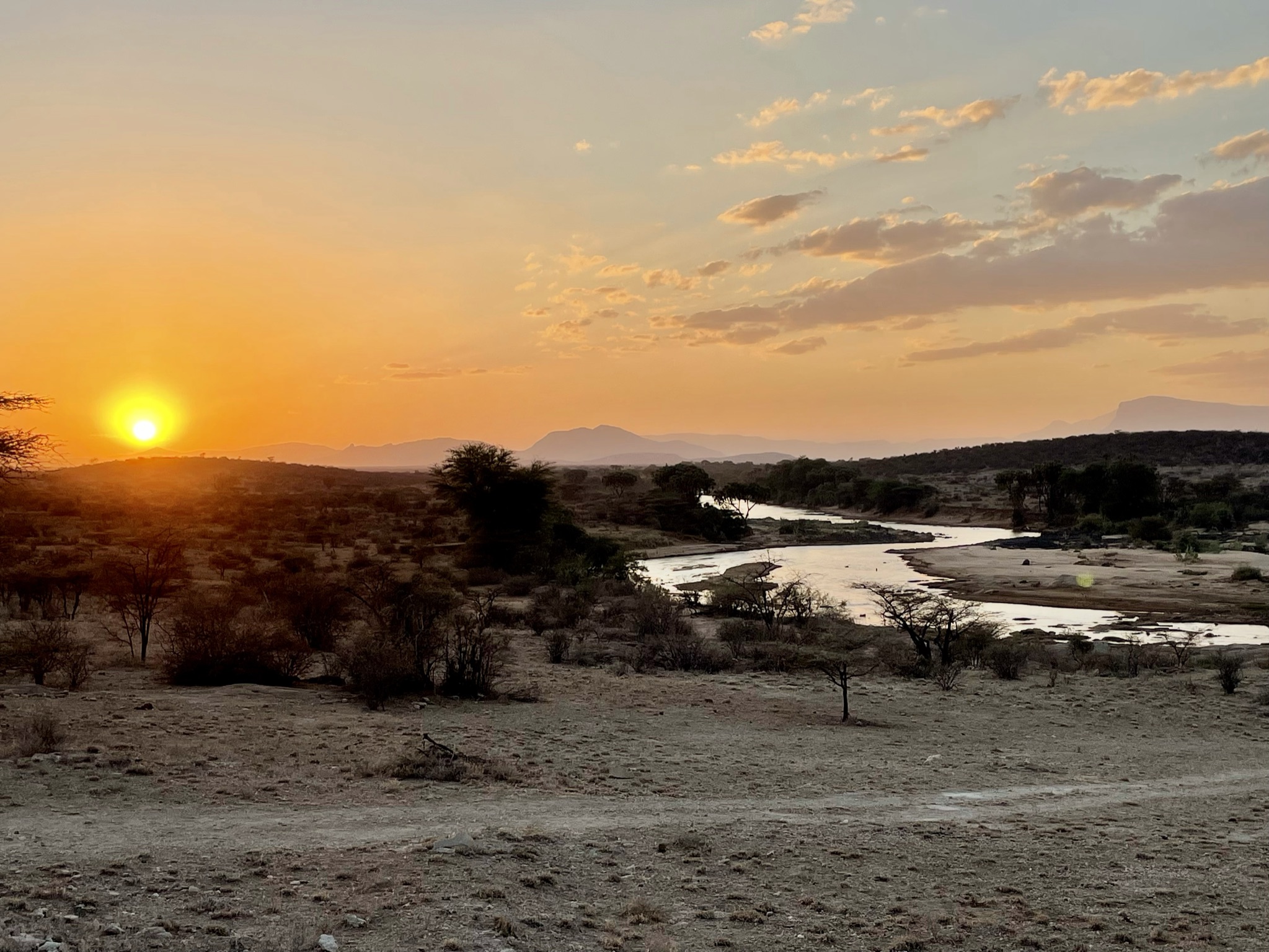
Ol Pejeta Conservancy
The Ol Pejeta Conservancy is a 364 square KM private wildlife site between the foothills of Aberdare and Mount Kenya. The natural environment includes grass plains, wooded grassland, acacia woodland, and evergreen thickets. The region is beautiful. On a clear day, you may see Mount Kenya.
Inside the Conservancy there is a sanctuary that protects the last two northern white rhinos. And there’s a 300-acre sanctuary for rescued chimpanzees from the black market.
The conservancy conducts wildlife research. They have poster presentations about their research. And they work to generate income through wildlife tourism. The complementary enterprise is re-investment in conservation and local communities. The campsites and lodges are a part of the local enterprise projects.
Deaf World Adventures stays overnight at Sweetwaters Serena, A Campsite inside the Ol Pejeta Conservancy. Accommodations at the camp are all heavy-duty canvas tents. And all tents have electricity, a toilet, and a hot-water shower.
The campsite has truly nice decor. It has a huge dining room that looks out to a waterhole with animals. The camp includes breakfast, lunch, and dinner. The food is plentiful and buffet-style.
And they have a nice lounge with a bar that showcases stunning views of the waterhole, where you can gaze out at wildlife while enjoying your drink. there are benches outdoors that are closer to the waterhole.
The Deaf World Adventure itinerary includes a visit to the chimpanzee and rhino sanctuary. You may meet Baraka, the blind rhino. He’s a very sweet black rhino and will accept his food from you. Guards will let you know whether and where you can pet him. You’ll fall in love with Baraka.
Photo Gallery of Adventures at Ol Pejeta Conservancy
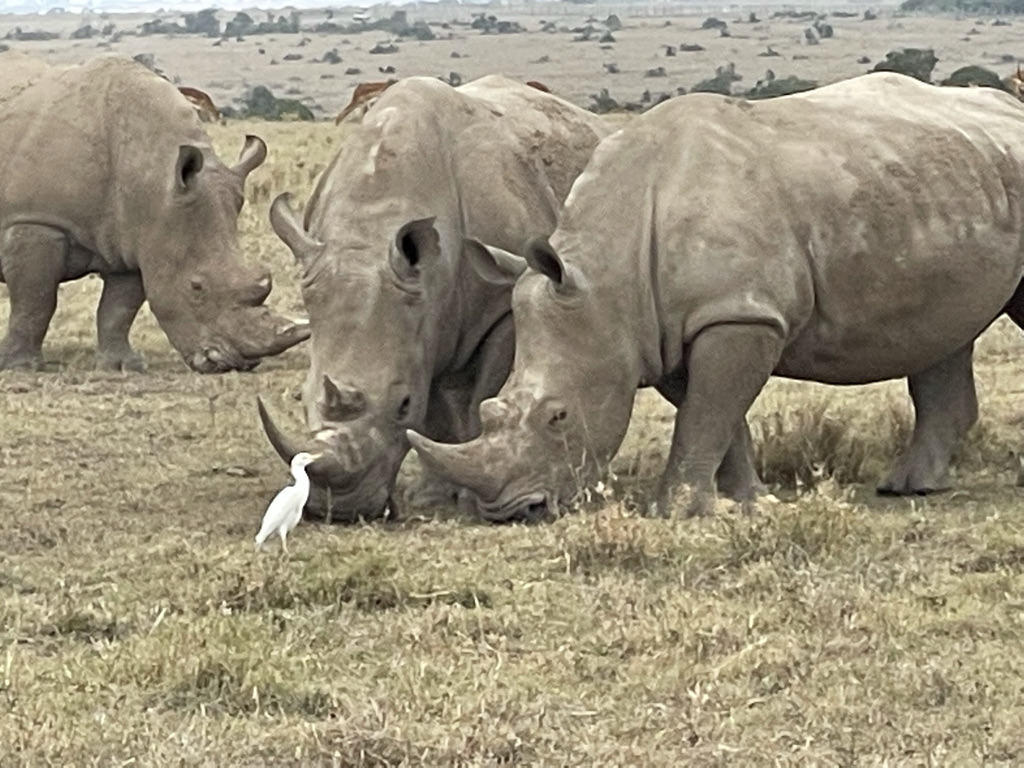

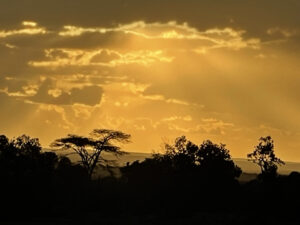
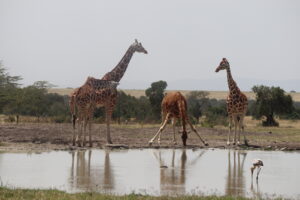
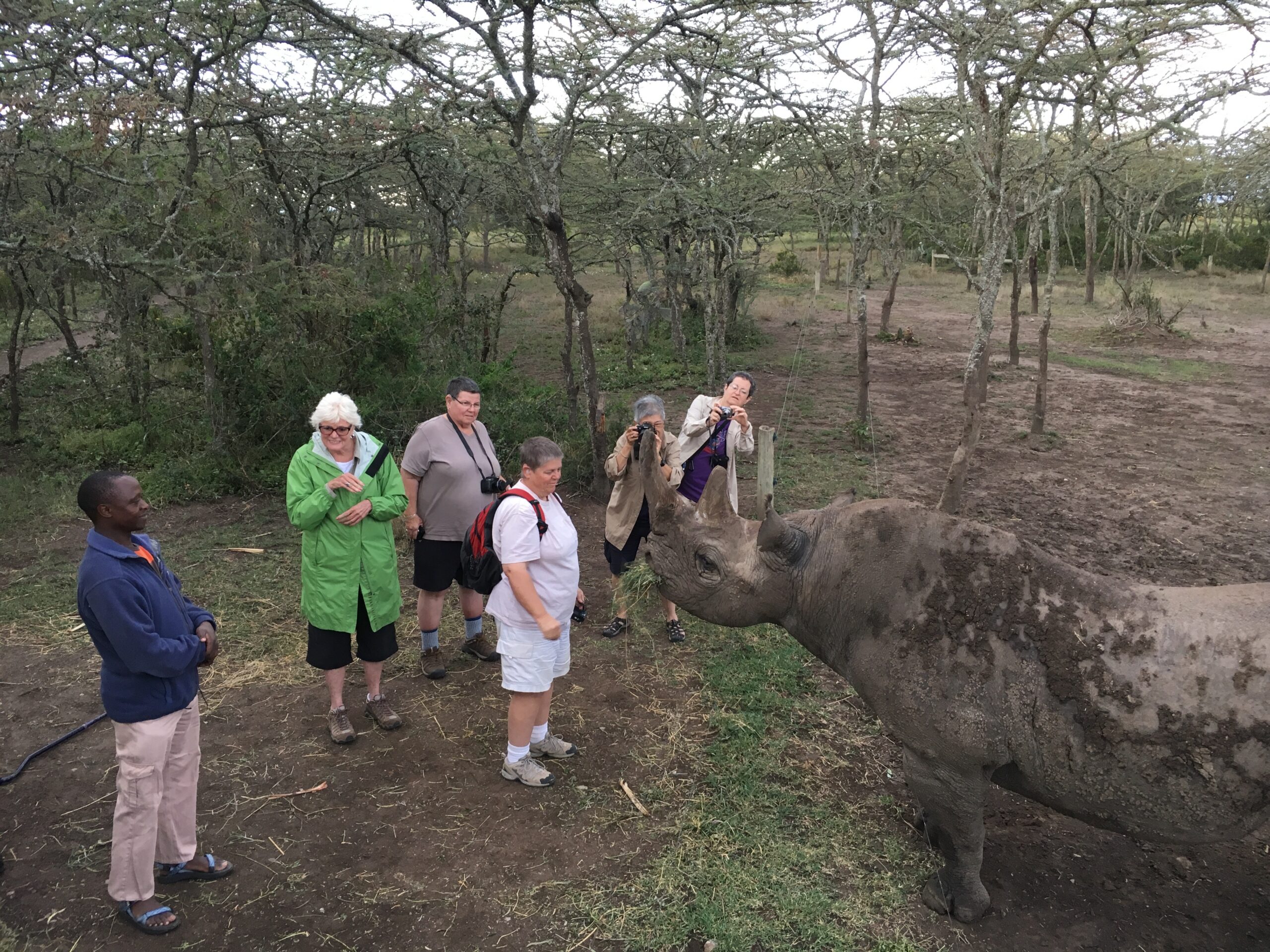
Lake Naivasha & Crescent Island Game Sanctuary
Lake Naivasha is at the highest elevation of the Kenyan Rift Valley. Apart from transient streams, the lake is fed by the Malewa and Gilgil rivers. There is no visible outlet for the river. The lake is freshwater which gives the assumption that there is an underground outflow. Lake Naivasha is a mystery. The water rises and drains by itself.
The lake is home to a variety of wildlife, including over 400 different species of birds, fishes, and a sizable population of hippos. Many people come to the lake for boating. Swimming in the lake is not allowed due to the danger of hippos that might attack.
On the lake, there is an interesting island known as Crescent Island. The island is shaped like a crescent and is accessible only by boat. The island is a game sanctuary with wildlife animals. The lake with shores hosts abundant birdlife including pelicans, cormorants, and fish eagles. Reports show that there are more animals per acre on the island than found in any other wildlife reserve in Kenya. The animals cannot wander on and off between the mainland and the island. When the water of the lake level goes down and some land surfaces, the animals come and go freely. There have not been any predators on the island. Most of the animals on the island are hoofed animals. They became stuck on the island after water from the lake rose. Guests who come to the island usually explore the island on foot with a local guide. You can learn more about the island here: Crescent Island Game Sanctuary.
Deaf World Adventures spent two nights at the Sopa Lodge Resort. It’s a resort with double occupancy cottages by Lake Naivasha. Their property is huge and lovely. They have an expansive lawn with grassland, acacia bushes, and trees. And you can see the lake from the terrace of your room. More interesting is that there are wildlife animals who are permanent residents that live on the property. They are usually giraffes, hippos, zebras, impalas waterbucks, cape buffalos, and lots of birds. You should go for a walk around the resort with a staff escort.
Activities at Lake Navishia include a safari boat ride on the lake and a walking safari on Crescent Island. Whenever Crescent Island is closed to the public, the walking safari is moved to Crater Lake. The two sites are in the same lake region. Crater lake is a dormant volcano with a lake on top. It has amazing wildlife too.
Some other optional activities such as horseback riding and cycling on trails can be arranged during your free time through Peter.
Photo Gallery of Adventures at Lake Naivasha
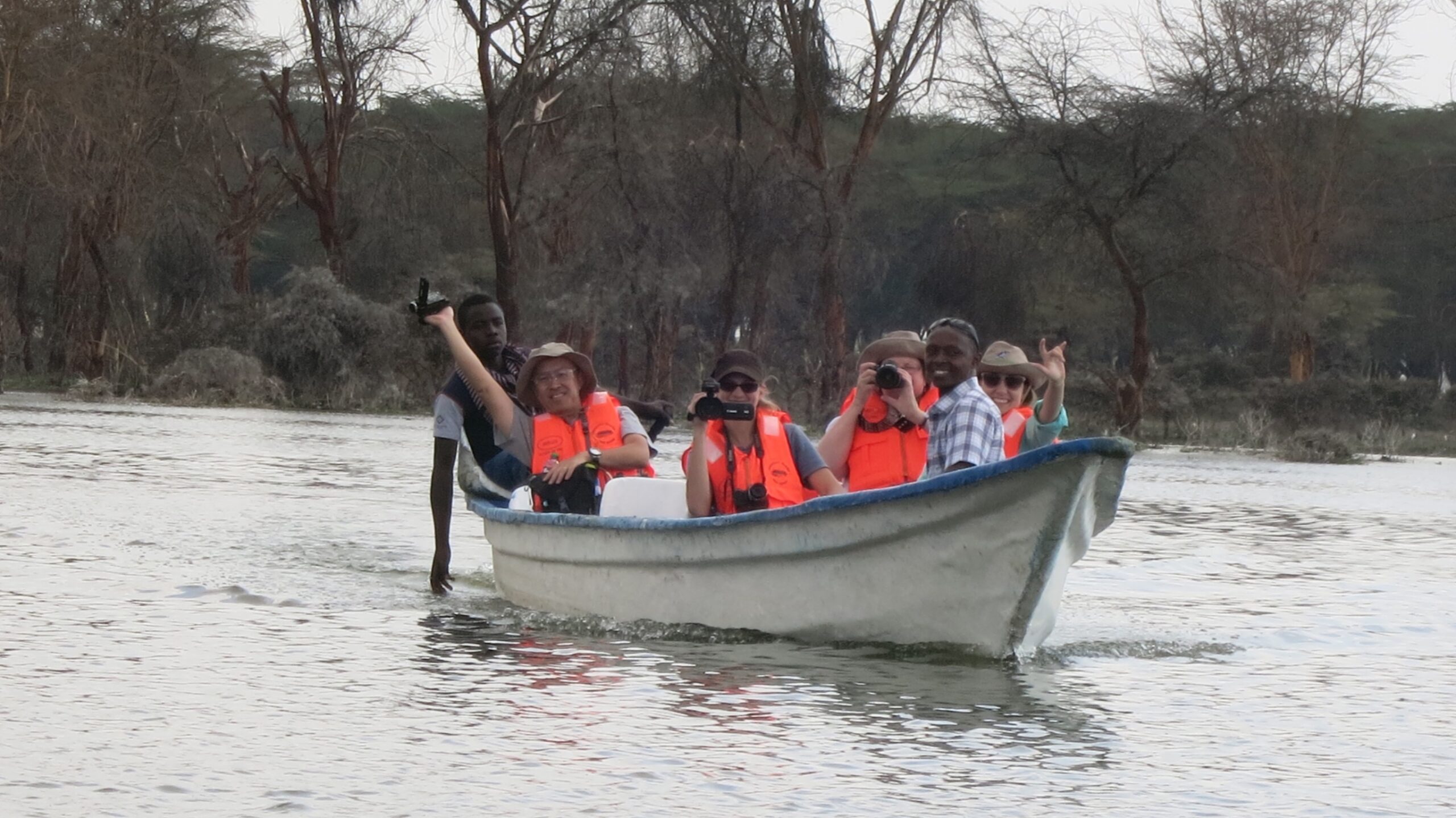
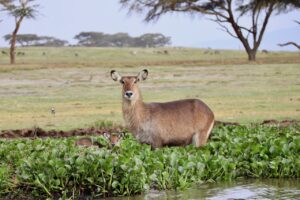
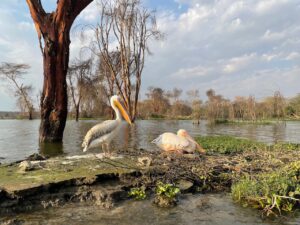
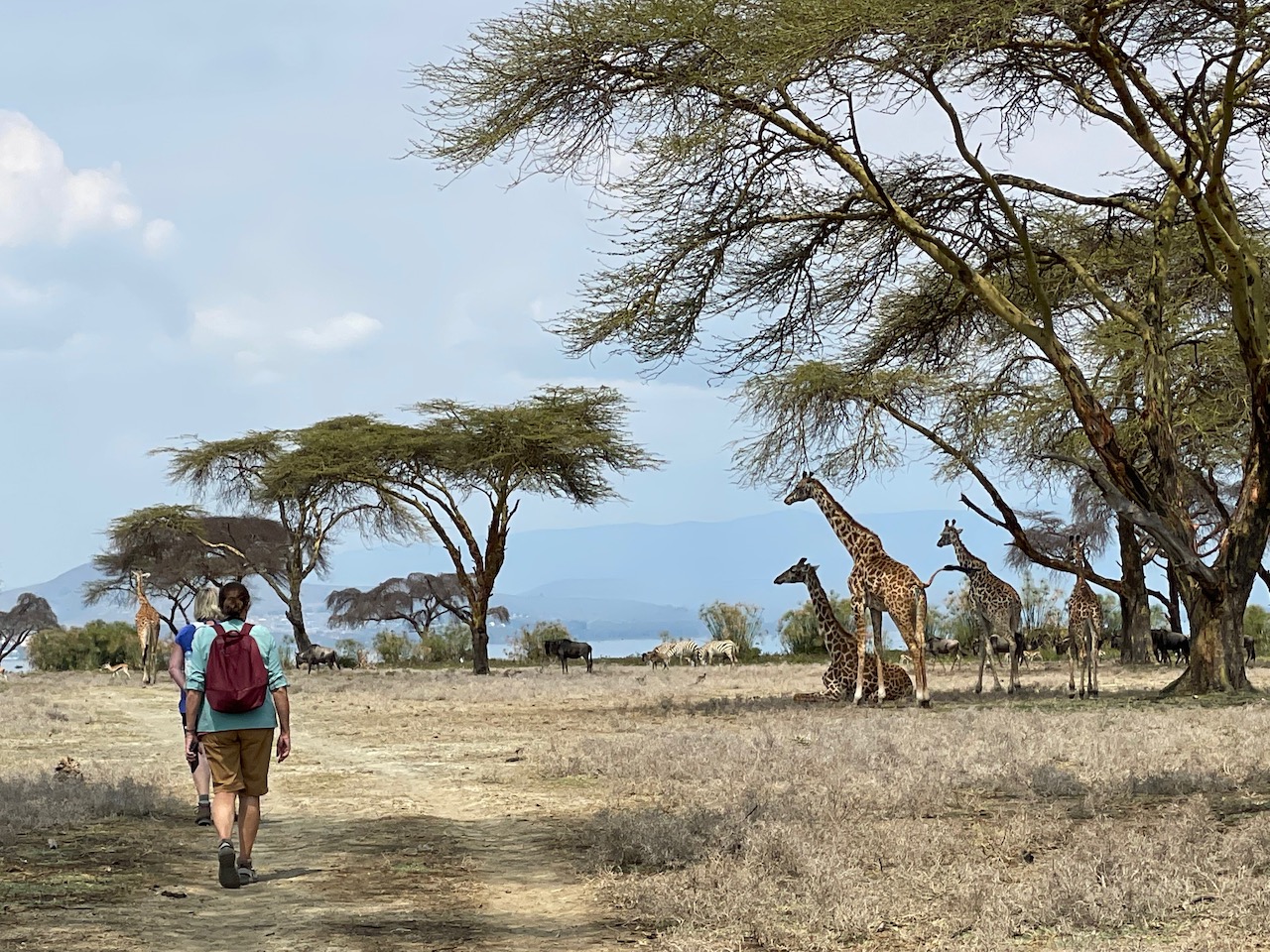
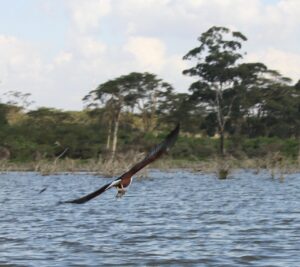
Maasai Mara Reserves
The Maasai Mara is one of the most famous and important wildlife conservation in Africa. It is contiguous with the Serengeti National Park in Tanzania. The park is named after the Maasai people who settled in the area from the Nile Basin.
The park or the Mara as locals call it is primarily open grassland with seasonal river-lets. The landscape is characterized by dotted trees, savannah plains, scrubs, acacia trees, and rolling hills. The word “Mara” which means “spotted” in the local Maasai language refers to the many short bushy trees that dot the landscape.
The Maasai Mara seems to compromise only a very small part of Africa’s total landmass, yet a large percentage of Africa’s larger mammals must be found there. The mara is known for its exceptional populations of lions, leopards, cheetahs, and elephants.
The Mara hosts the annual Great Migration, which secured it as one of the Eight Natural Wonders of Africa, and as one of the Ten Wonders of the World. Safari enthusiasts from all over the world come to watch the wildebeest migration.
The wildebeest are the dominant inhabitants of the Maasai Mara, and their numbers are estimated in the millions. Each year in July, many zebras, gazelles, and other kinds of antelopes migrate north from the Serengeti plains and cross the Mara river to Kenya side in search of fresh pasture and return to the south to Tanzania side around October. The Great Migration is one of the most spectacular wildlife events.
And the famous ethnic groups of Africa, the nomadic and pastoralist. The Maasai people are the Nilotic ethnic indigenous groups inhabiting areas of northern, central, and southern Kenya and across the border in northern Tanzania as well. The Maasai people are the ethnic people in East Africa. They have a unique culture and traditions. It’s always interesting to learn about a lifestyle from locals and ethnic groups. Deaf World Adventures aims to include a visit to a Maasai village on every Deaf Safari trip.
Deaf World Adventures spent three nights at Ilkeliani. Safari participants stay in canvas tents inside the Maasai Mara. The camp sits up on a hill with trees by the Talek River.
The Ilkeliani campsite just redesigned their camp after a flood incident in 2020. Now they have huge family-size tents with wooden decks and detachable canvas that zip open or close. The rooms have comfortable furnishings. Every tent bedroom has a bathroom and a shower stall with a view including an indoor that opens to the outdoors. The tent is ideal for a family or group of 4 or 6 persons. The campsite has a huge observance deck with a bar where you can sit with a drink and watch wildlife from high up. And there’s a pit for a campfire if you like. The camp also has a nice lounge with picture books, music, and another bar. Meals are usually served at the dining tent, though you may arrange to have your dining served anywhere around the camp in some bush or on your private veranda.
We can also opt to stay at the Basecamp Explorer. The campsite is a bit more rugged and is quiet. It is hidden in the bushes, and everything about camping there is outdoors including showering.
The scenery at Basecamp Explorer is fascinating. Tents are spacious, have toilets, and a hot water shower (including one outdoor from your tent), and all tents have a private veranda, with some that look down to the Talek River. The main dining site is also outdoors on a deck with a roof and fireplace but you can eat anywhere around the campsite. There’s a deck in a tree with limited seating. Dining in the bushes with the birds is fun. Monkeys may come to visit and try to steal your food. Basecamp Explorer has a culture center with a fabulous showcase of information about the Maasai Mara animals and the Maasai people. And their souvenir store sells handicrafts by Maasai People.
Not to mention, former US president, Obama with his family stayed at the Basecamp explorer. Other known celebrities have also stayed at this campsite, too. See photos of Obama’s forest.

Meals at both camps are an entree or main dish with some choices. You can pick your meat or a vegetarian dish. The chefs at both campsites cook their food using seasonal and local produce. They’re experienced and excellent cooks. Basecamp Explorer chefs have published a cookbook that makes a great souvenir to take home.
Safari activities at the Maasai Mara include daily game drives, a picnic in the open, tree planting, and a visit to a Maasai village. There are some optional activities on the mara, such as a hot air balloon ride early in the morning over at the Maasai Mara, horseback riding, guided bush walk, sundowner with appetizers and drinks, beading lessons, and massages that you can book for sore muscles from riding on natural rugged and bumpy tracks.
Photo Gallery of Adventures at the Maasai Mara
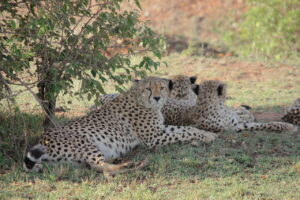
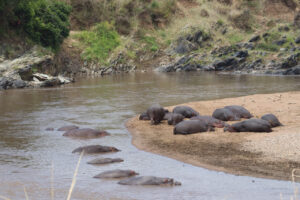
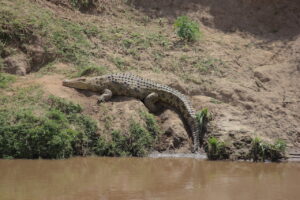

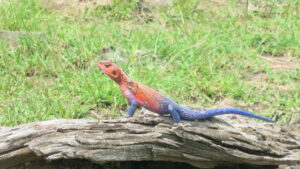

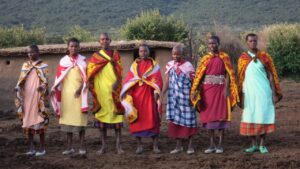
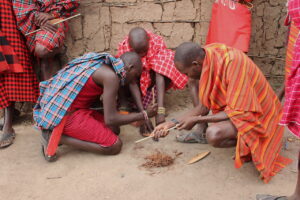

Deaf World Adventures Campsites at the Maasai Mara
Basecamp Explorer Maasai Mara Campsite
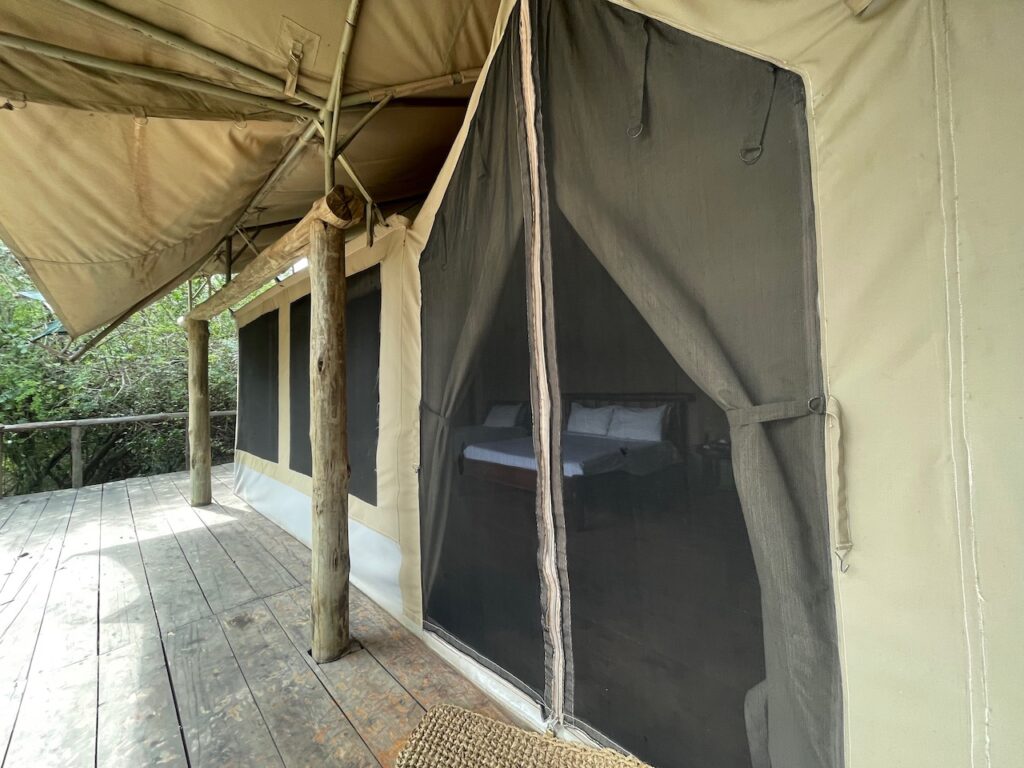
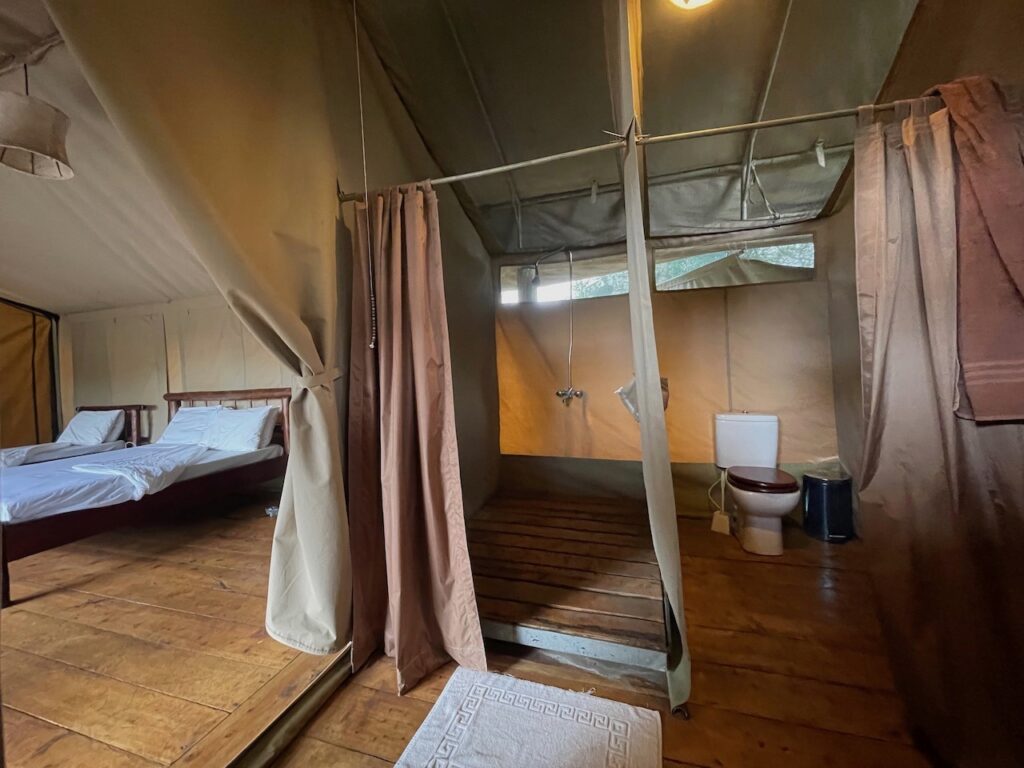
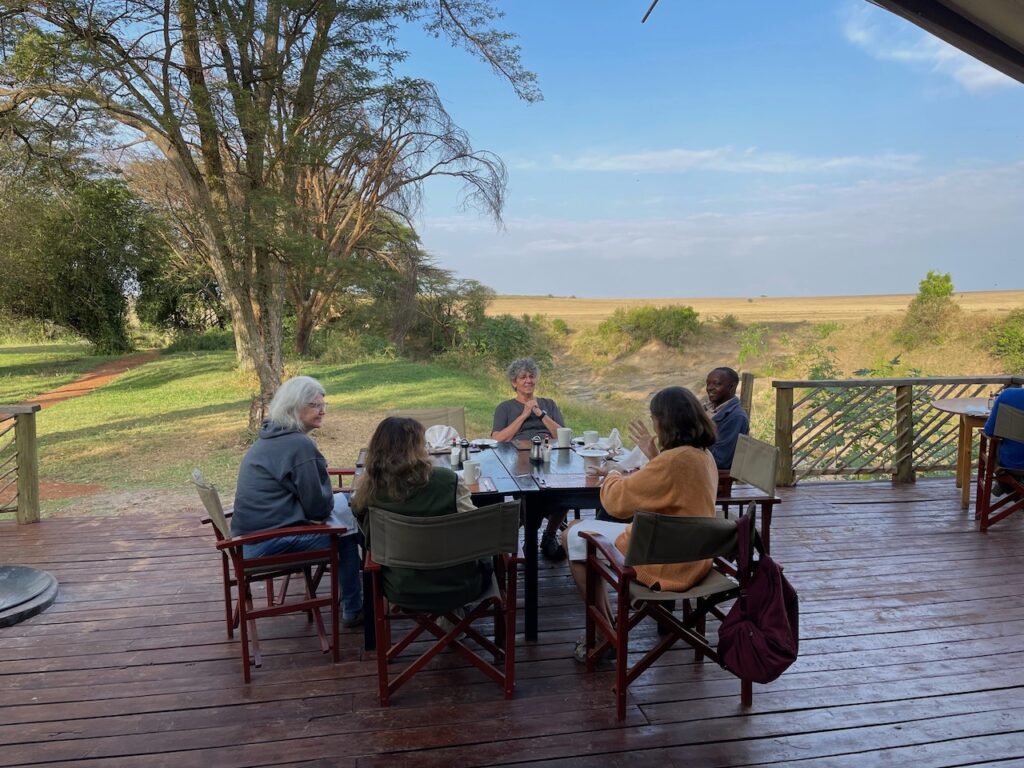
Ikeliani Campsite from 2014 ~2018 (2020 flood incident)
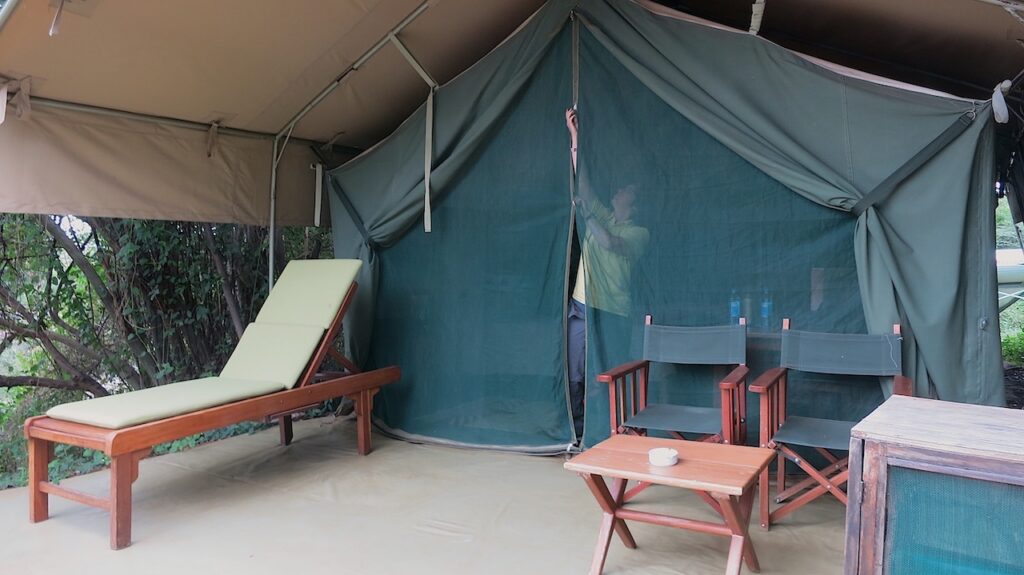
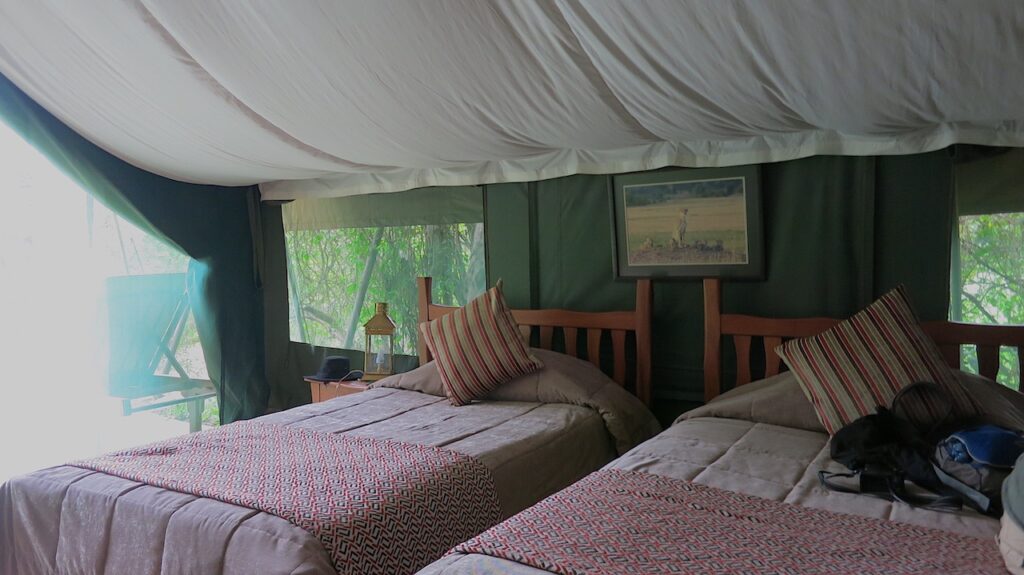
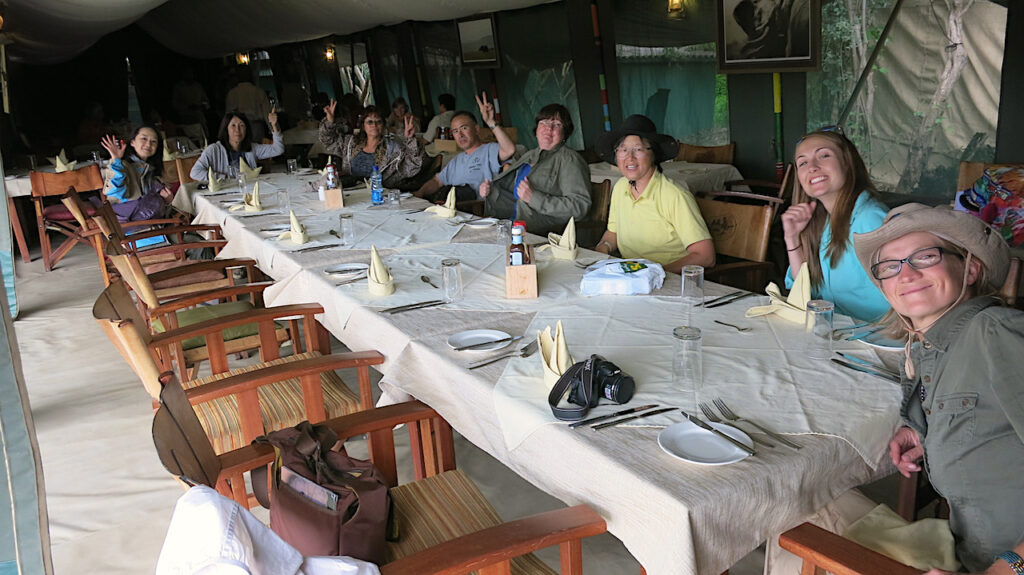
The New Ilkeliani Campsite opened in September 2021
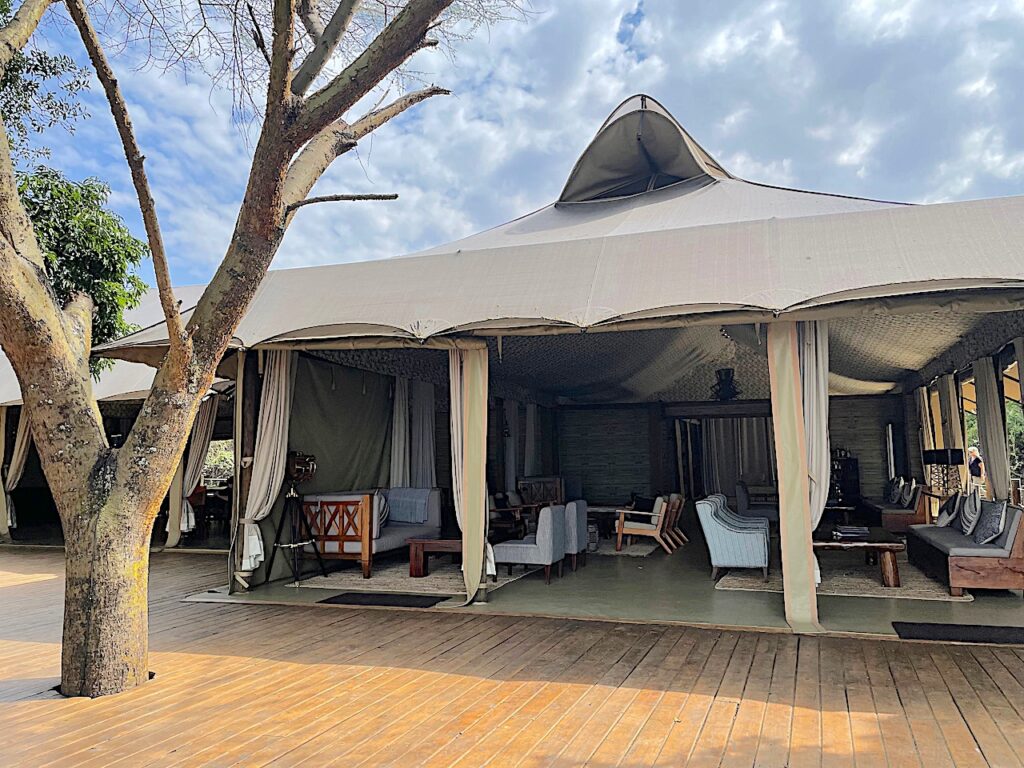
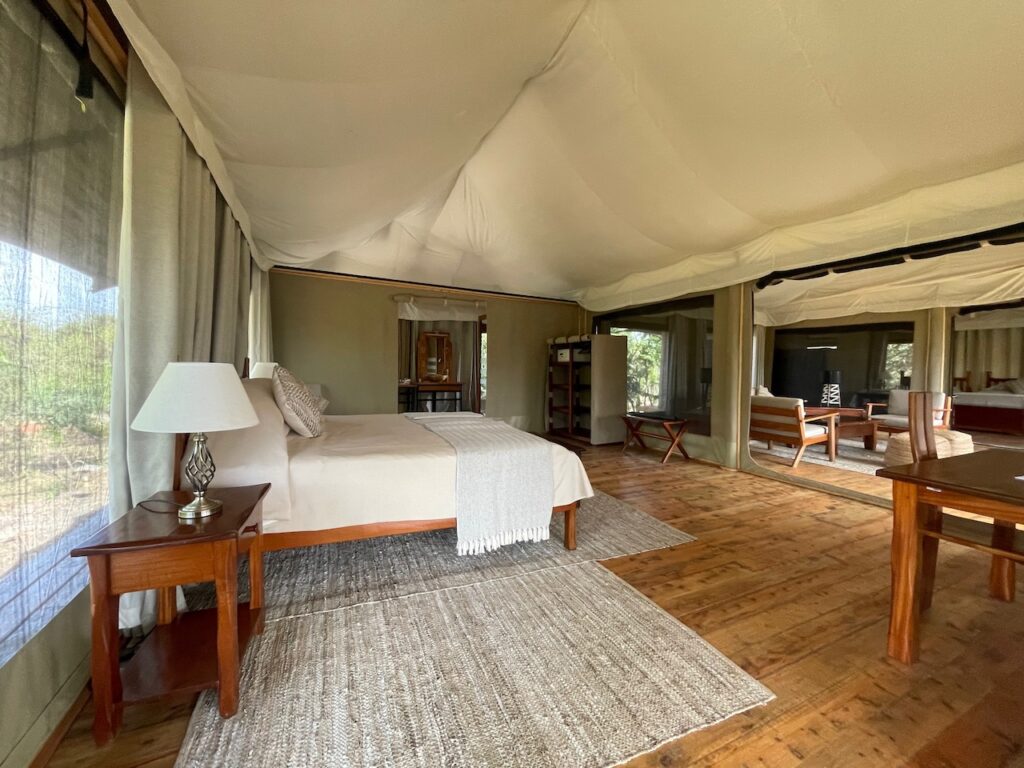

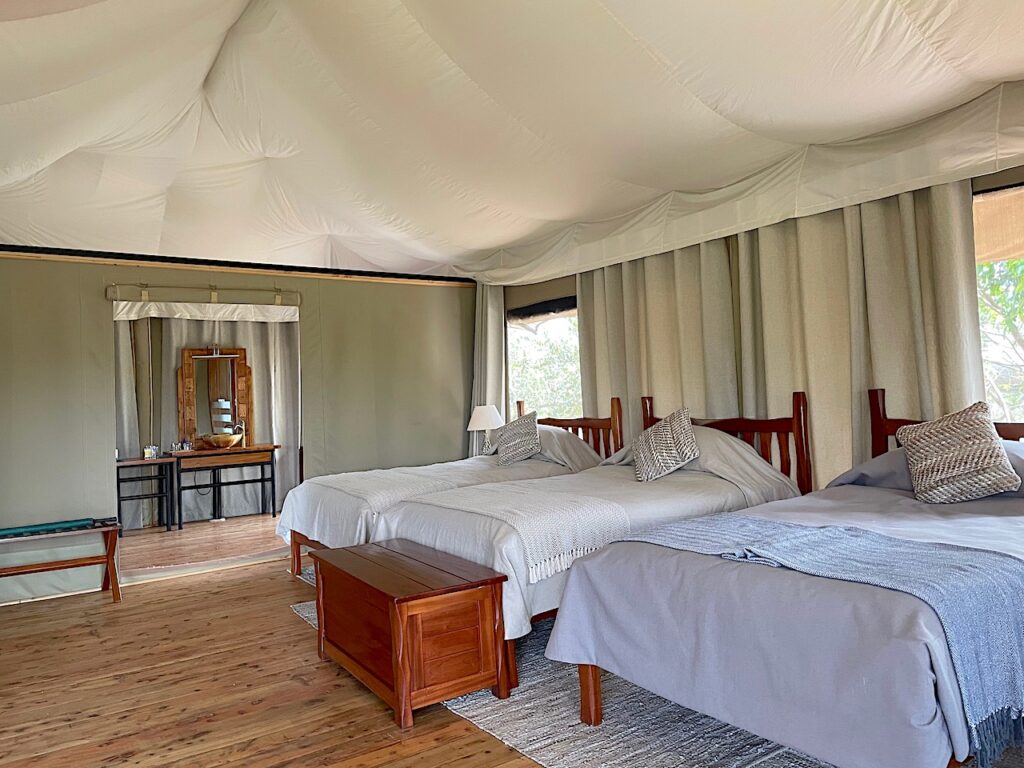

Let’s go on a safari, please feel free to inquire about information about Deaf World Adventures’ Annual Wildebeest Migration safari or about how to have your private group with family or friends. The maximum number of persons for a safari is six. It is how many people can fit in the landrover.
share